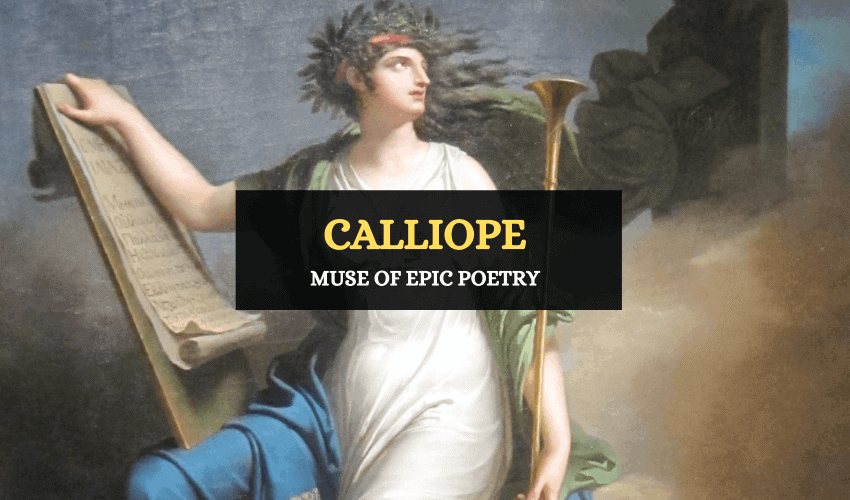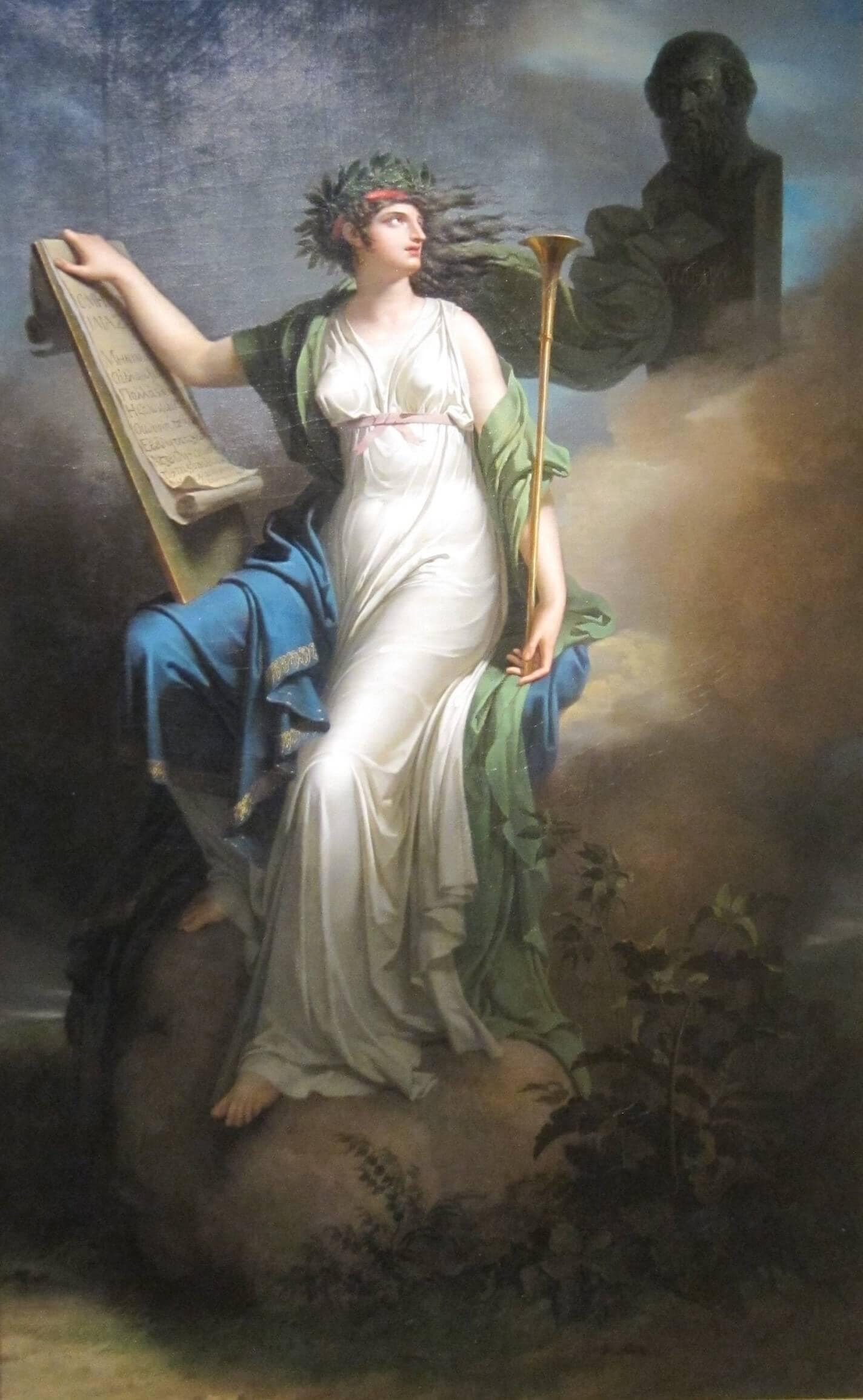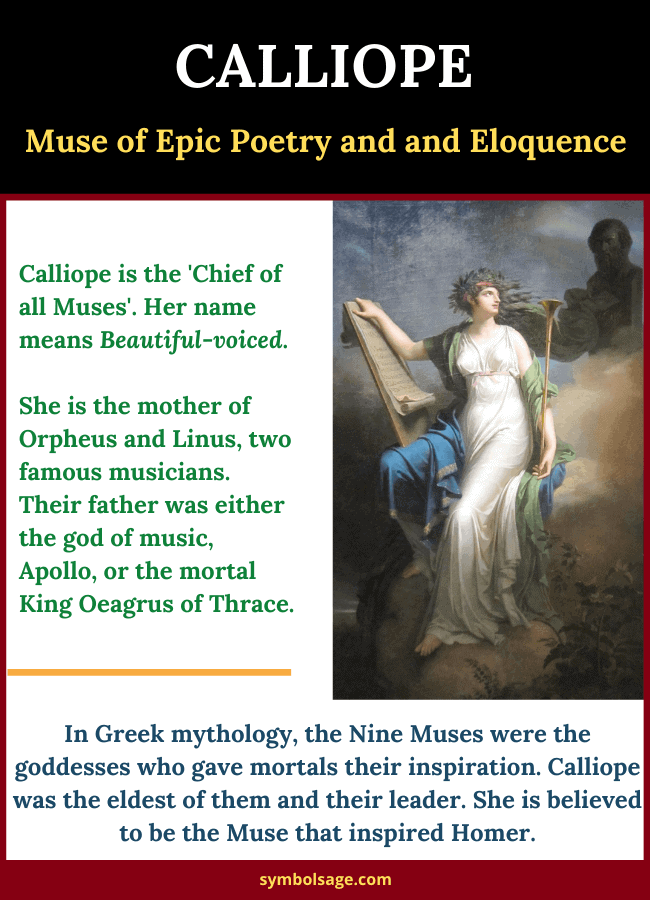
Table of Contents
In Greek mythology, the Muses were the goddesses who gave mortals their inspiration, and Calliope was the eldest of them. Calliope was the Muse of eloquence and epic poetry, and she also influenced music. Here’s a closer look.
Who Was Calliope?

Calliope was the eldest of the Nine Muses, the goddesses of arts, dance, music, and inspiration. The muses were the daughters of Zeus, the god of thunder and king of the gods, and Mnemosyne, the Titaness of memory. According to the myths, Zeus visited Mnemosyne for nine nights in a row, and they conceived one of the Muses each night. The nine Muses were: Clio, Euterpe, Thalia, Melpomene, Terpsichore, Erato, Polyhymnia, Urania, and Calliope. Each one of them had a specific domain in the arts.
Calliope’s domain was epic poetry and music. She was also the goddess of eloquence, and according to the myths, she was in charge of giving heroes and gods this gift. In this sense, Calliope’s depictions show her with a scroll or a writing table and a stylus. Her name in Ancient Greek stands for Beautiful-voiced.
Calliope and the other Muses frequented Mount Helicon, where they had contests, and mortals worshipped them. People went there to ask for their assistance. However, they dwelt on Mount Olympus, where they were at the service of the gods.
Calliope’s Offspring
In the myths, Calliope married King Oeagrus of Thrace, and together they had the lyre-playing Greek hero Orpheus and the musician Linus. Calliope taught Orpheus music, but it would be the god Apollo who would finish his education. Apollo made Orpheus the great musician, poet, and prophet he wound up being. His musical talent was so astonishing that his singing made creatures, trees, and stones follow him. Calliope is also the mother of Linus, the great musician, and inventor of rhythm and melody.
In other versions, she had two children from Apollo: Hymen and Ialemus. She appears as the mother of King Rhesus of Thrace, who died in the War of Troy.
Calliope’s Role in Greek Mythology
Calliope did not have a central role in Greek mythology. She appears in the myths with the other muses, performing deeds together. As the goddess of eoquence, Calliope gave her gift to heroes and gods by visiting them in their cribs when they were babies and covering their lips with honey. As the Muse of epic poetry, people said that Homer was only able to write the Iliad andthe Odyssey thanks to Calliope’s influence. She also appears as the main inspiration of other great Greek poets.
She participated with the other Muses in the contest they held against the Sirens and the daughters of Pierus. In both events, the goddesses rose victorious, and Calliope turned the daughters of Pierus into magpies after they dared to challenge the all-talented Muses. Both Hesiod and Ovid refer to Calliope as the chief of the group.
Calliope’s Associations
Calliope appears in the writings of Virgil, in which the author invokes her and asks for her favor. She also appears in Dante’s Divine Comedy, where the author calls her and the other Muses to bring dead poetry back to life.
She is also often depicted in artwork, with her most famous associations being with the epic poet Homer. In one painting by Jacques Louis David, Calliope is shown playing the lyre and mourning Homer, who lies dead. In another, she holds the Odyssey in her hand. There is a famous painting of Calliope in the Francois Vase, which is currently in an exhibit in the Museo Archeologico in Florence.

In Brief
The Muses as a group have a significant influence in Greek mythology, and Calliope as their leader stands out among them. She and her sons influenced music in ancient Greece. If the myths are true, thanks to Calliope’s inspiration, Homer gave the world two of its most iconic literary works.








